https://britishcinematographer...
Find out how DP Fraser Stephen blended digital and film capture to create the dreamy visual language of award-winning short, Safe.
The timely topic of young women’s safety is the focus of Aleah Scott’s reflective film, which won Best Micro Short at the BFI Future Film Festival 2023. The idea of helping to create something to highlight this important issue motivated DP Fraser Stephen to get involved, creating a nostalgia-tinged aesthetic.
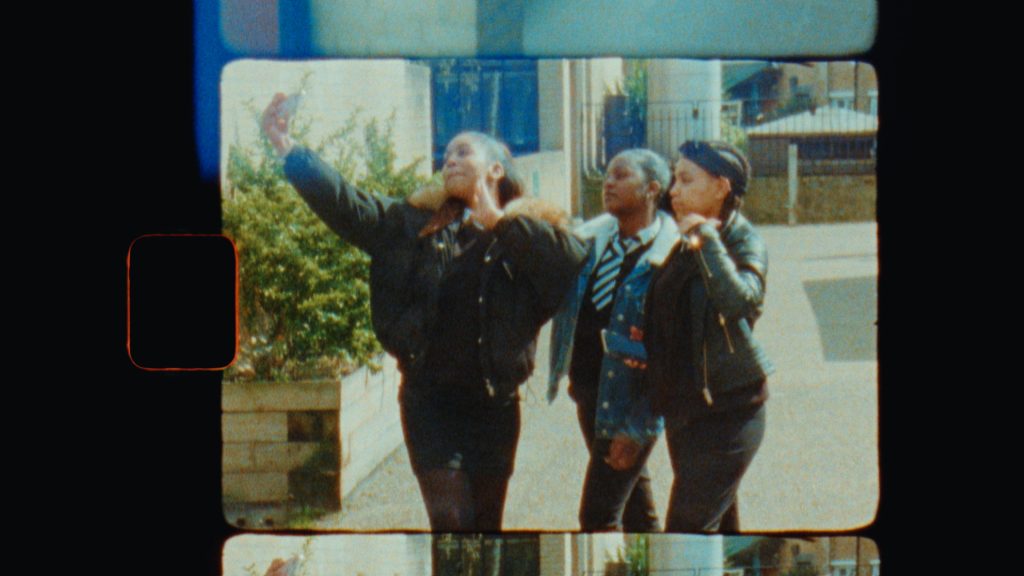
British Cinematographer: How did you get involved with Safe and what appealed to you about Aleah’s idea for the micro short?
Fraser Stephen: I moved to London from Scotland without a network to help me establish myself. My priority was finding new and upcoming directors to grow with. I found Aleah via creative networking platform The Dots and sent her a message pitching myself. We exchanged a few messages and she sent me the treatment for Safe.
I really connected with it. I remember having been shocked by a horrific video of an attempted abduction of a schoolgirl in South London that had gone viral in the weeks before. The idea of being able to create something that could raise awareness about the issue of young womens’ safety was a big motivating factor. Along with the fact I could see Aleah’s voice as a director coming through clearly in her previous film, The Art Of Baking.
BC: What are the challenges of lensing a micro short compared to standard short form?
FS: In terms of challenges, I think standard short form is more closely aligned with TV and features, whereas micro shorts align with commercials and music videos. On these projects I might only have a few hours of prep, a recce and a day of production. You have to plan and implement a visual identity that is going to grab a viewer’s attention when they are scrolling through a sea of content on their phone. There’s less room for subtlety. When I think about cinematography, I always think about creating images that are worthy of being shown on the big screen, as opposed to a phone, tablet or laptop. I want to create the best work possible with the resources available regardless of the format.
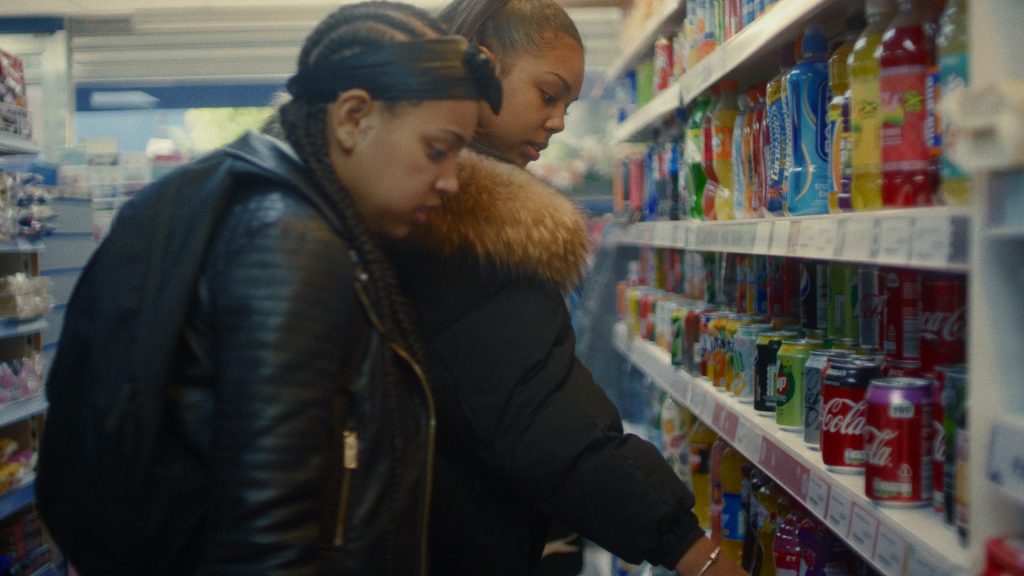
BC: How would you describe your creative collaboration with Aleah and what made it so successful?
Our first face-to-face meeting was during the pandemic and all it took for us to become relaxed in each other’s company was a 30-minute Zoom call. We’ve stayed friends and collaborators since making Safe and done a few commercials together.
We have a shared aesthetic and love for cinema. Aleah is an ideal collaborator. She’s intelligent. Her background as an English graduate is quite unique when compared with other directors I work with. She also founded and curates her own short film night, ‘Feels’.
BC: Take us back to prep. What was Aleah’s vision for Safe’s look and mood, and what new ideas and perspectives did you bring?
FS: I remember Aleah’s core idea was to juxtapose the image with the sound. Naturally with the themes we were dealing with (objectification of young women and sexual assault) she knew that the interview material had the potential to be dark. I proposed that we aim to represent the innocence, excitement and fun of a child’s teenage years with the images.
Building on Aleah’s scene ideas, I wrote in my prep document: “The look of the film should evoke feelings of innocence, naivety, nostalgia and happiness. We will create bright scenes with dreamy lighting and saturated, warm colours representative of a child’s excitement at discovering the world. We can use spontaneous and energetic handheld camera movement in exterior scenes where the girls are running or having fun and more static or slow moving/fluid camera movement can be present in more calm scenes, such as with the kids eating, playing or reading at home. Wide angle lenses can represent the open possibilities of a child’s emerging years.”

BC: What creative references did you and Aleah exchange?
FS: Aleah’s treatment contained images from Rocks (dir. Sarah Gavron, cin. Hélène Louvart AFC), which I hadn’t seen at the time, but watched quickly after seeing the frames and loved. It provided an excellent start point for me to dig deeper and find more references to discuss with Aleah. For each scene she proposed, I found frames via ShotDeck to check we were on the same page in terms of lighting, colour and composition. Some of the films I studied and brought back to her were Fish Tank, Bend It Like Beckham and The Last Black Man In San Francisco. We had a shared aesthetic in mind from the beginning.
BC: How long was the shoot and when did it take place?
FS: The shoot was a single day in Spring 2021. As this was a passion project and self funded by the director, we selected the day based on the weather forecast. We had the freedom in our schedules to approach it this way and we wanted lighting conditions that would lend themselves well to the look we wanted.
BC: Run us through the locations – did any pose any cinematographic challenges?
FS: We shot in a series of public spaces including a park and a high street, as well as in a few places of business such as a fast food restaurant and a neighbourhood corner shop. The back garden/trampoline scene took place at Aleah’s Mum’s and the kitchen and living room scenes took place at her sister’s. Aleah proposed the locations, they were all local to her and places she knew well. We checked most of them out together ahead of shooting. For me, shooting exteriors without lighting resources and crew is all about choosing the right angles and blocking appropriately. The kitchen and living room scenes were the most challenging as I had to light without crew using just a few old tungsten sources that I had access to at the time.
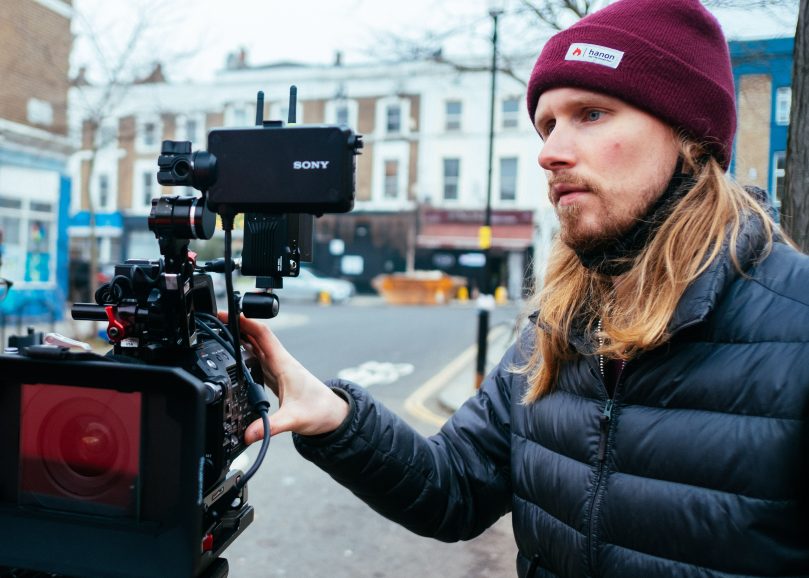
BC: What inspired you to shoot both digital and film, and what cameras did you use for each?
FS: Mixed media has been prominent in the commercial and music video space for many years now. I find that the contrast between two or more formats can surprise the viewer and keep them engaged in the content. The more different the look of the formats, the better! Our A camera was the Sony FS72. It has a Super 35 sensor and the E mount allows for the use of a Metabones Speedbooster/focal reducer with EF lenses to get an angle of view closer to that of full frame. It has decent latitude and produces a neutral, modern image.
The Super 8 camera was a Canon Auto Zoom 814. We shot on Kodak Super 8 200T, developed and scanned by On8Mil. It adds so much intimacy, texture and nostalgia. It was crucial to the success of the edit.
BC: Tell us about your lenses and filters, and how they contributed to the short’s nostalgic atmosphere.
FS: I tend to favour prime lenses with a lot of character. I knew about adapting vintage stills glass because I started my career as a photographer. I used to look around charity shops and on eBay for bargains. My first camera was a Nikon F100 which I paired with a Nikkor 28mm f/2 AI-S lens. When my work started to transition from stills photography to cinematography, I sold my Nikkors and collected a set of Contax Zeiss primes. They are famous for being comparable to Zeiss Superspeeds, but available at a fraction of the price. I used those on Safe. The filtration used was Tiffen Black Pro Mist, which I find helps increase halation, making digital images more filmic. It blooms highlights nicely.
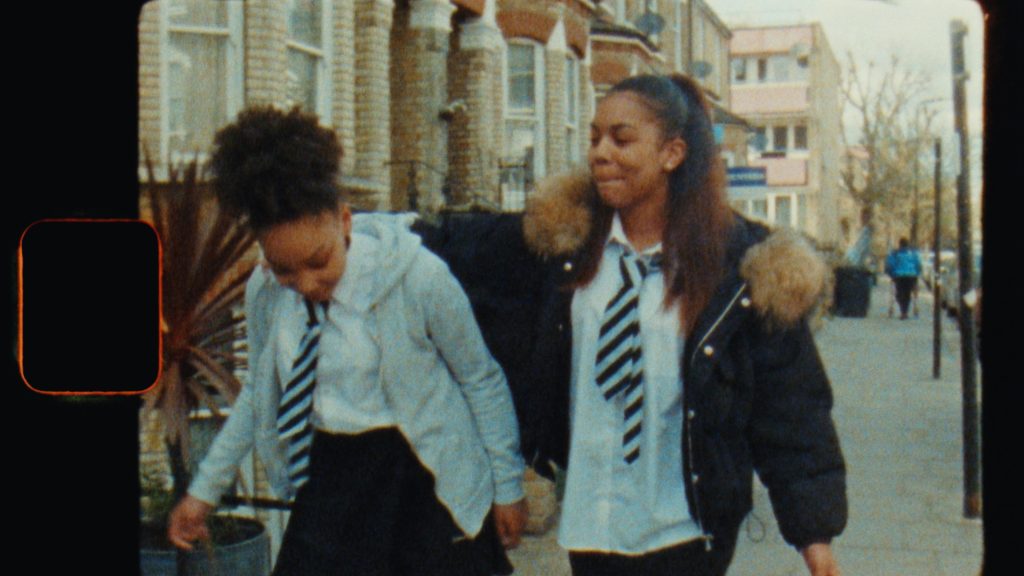
BC: What was your approach to camera movement for Safe?
FS: We discussed applying a similar handheld approach that we saw in Aleah’s original cinematography reference, Rocks. At times the camera is observational, distant and calm and at other times it is participating, visceral, energetic and in the faces of the actors. I love how reactive shooting handheld allows you to be. It doesn’t always come off, but you can try anything. I’m quite tall so I work with a Cinesaddle or Easyrig a lot of the time. However, a lot of the time if the camera is tracking I prefer to cradle it near my waist or chest.
BC: Take us through your approach to lighting Safe. What were your key pieces of kit, and how did you use natural light to your advantage?
FS: In the exterior locations, we choose what time we would shoot based on the position of the sun. It was just Aleah and I, along with the cast, so no reflectors or polys. We did our exteriors from 8-12ish to take advantage of the low sun and used it as a backlight where possible. For the interiors, I had a 2K blonde and a Dedo DLH4s kit with a projector and some gobos. Practicals played a big role too. We used a TV, laptop and fairy lights at different moments.
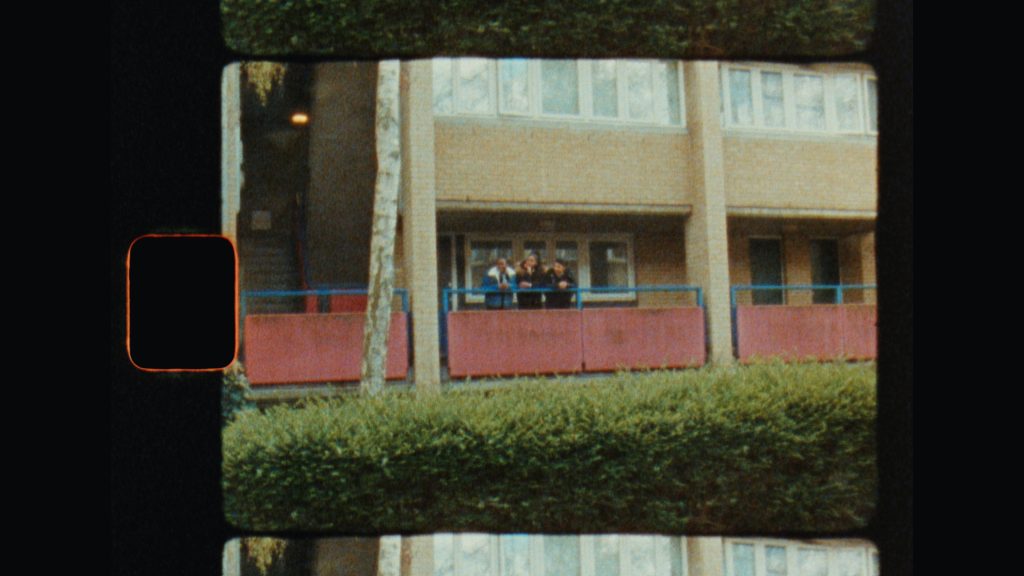
BC: What was your vision for the grade and how did you work with colourist Marty Webb to achieve this?
FS: Marty has been a trusted collaborator of mine for a number of years. We have worked on a variety of projects across genres including documentary, fashion, music video and commercials. So there’s trust and understanding there. We had the look in mind from pre-production so once we had picture lock, Aleah and I returned to our creative references, particularly Rocks and The Last Black Man In San Francisco, to show Marty. There’s a subtle film emulation look going on with the digital footage with grain, halation and warm tones.
BC: What is your favourite scene or shot from the short?
FS: Aleah had some brilliant scene ideas and it was my responsibility to break those down into sequences and shots. I think my favourite scene has to be the girls eating on the bench. For all my job is about cameras, lenses, lighting framing etc., the parts I enjoy most are always what happens when you point the camera at your subjects and see what they give you. Aleah’s casting was perfect and each of the girls (all non-actors) gave a really authentic performance which I think is absolutely key in the success of the film.
BC: What’s been your proudest moment from the production process?
FS: Seeing the film on the big screen at BFI Southbank as part of the BFI Futures 2023 film festival and where it picked up the Best Micro Short award was a great moment and will mean a lot for us moving forward.
Watch Safe now on Vimeo.